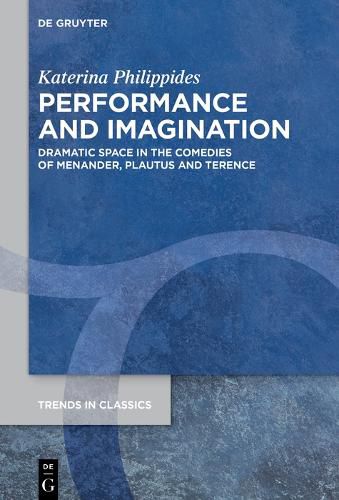Readings Newsletter
Become a Readings Member to make your shopping experience even easier.
Sign in or sign up for free!
You’re not far away from qualifying for FREE standard shipping within Australia
You’ve qualified for FREE standard shipping within Australia
The cart is loading…






This is an original study of the notion of space in surviving New Comedy plays by Menander, Plautus and Terence, informed by theoretical discussion on its specific categories. The main focus is on scenic space (what the audience sees) and extra-scenic space (what they imagine), with additional consideration of stage space (where the actors perform); these space distinctions permeate the book. There are illustrative examples of the use of the stage door, performed interior scenes, audible-off-stage events, speaking back into the house or gate-keeper scenes, scenes of distant and remembered space, deathbed scenes, and proxemics (characters' movements on stage). The second half of the book discusses places of isolation, places characters return to, metatheatrical space, men's and women's space, imaginary space, etc. The primary interest lies in interpreting dramatic texts as texts that contain their own performability. New insights and solutions are frequently proposed regarding long-debated issues of stage action. One conclusion to emerge is that rather than hindering playwrights, the austere set of New Comedy succeeds in rendering a vibrant world replete with the multifarious manifestations of public and private life.
$9.00 standard shipping within Australia
FREE standard shipping within Australia for orders over $100.00
Express & International shipping calculated at checkout
This is an original study of the notion of space in surviving New Comedy plays by Menander, Plautus and Terence, informed by theoretical discussion on its specific categories. The main focus is on scenic space (what the audience sees) and extra-scenic space (what they imagine), with additional consideration of stage space (where the actors perform); these space distinctions permeate the book. There are illustrative examples of the use of the stage door, performed interior scenes, audible-off-stage events, speaking back into the house or gate-keeper scenes, scenes of distant and remembered space, deathbed scenes, and proxemics (characters' movements on stage). The second half of the book discusses places of isolation, places characters return to, metatheatrical space, men's and women's space, imaginary space, etc. The primary interest lies in interpreting dramatic texts as texts that contain their own performability. New insights and solutions are frequently proposed regarding long-debated issues of stage action. One conclusion to emerge is that rather than hindering playwrights, the austere set of New Comedy succeeds in rendering a vibrant world replete with the multifarious manifestations of public and private life.